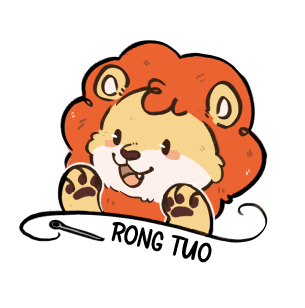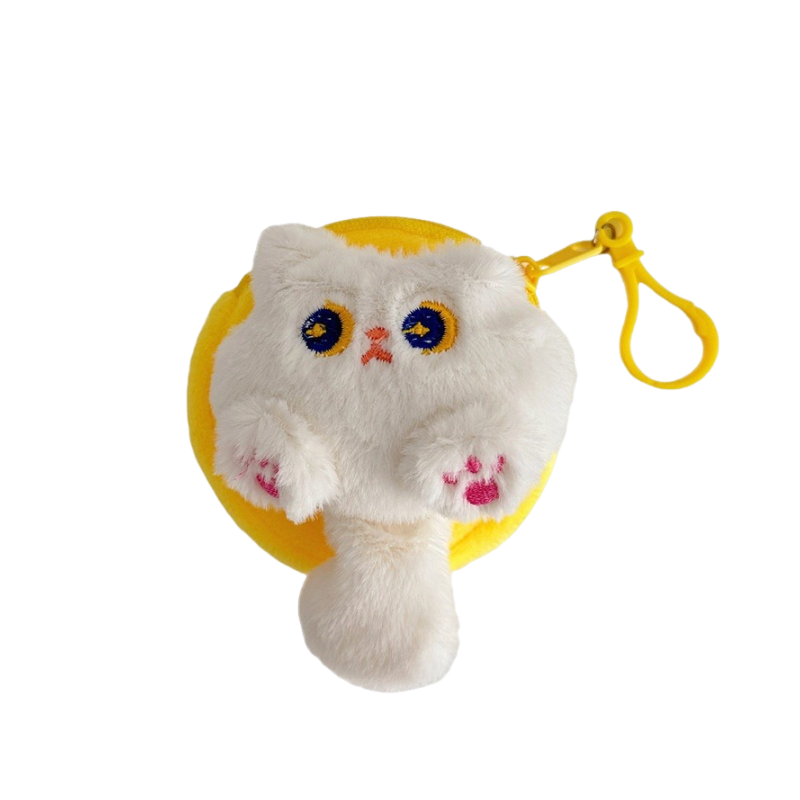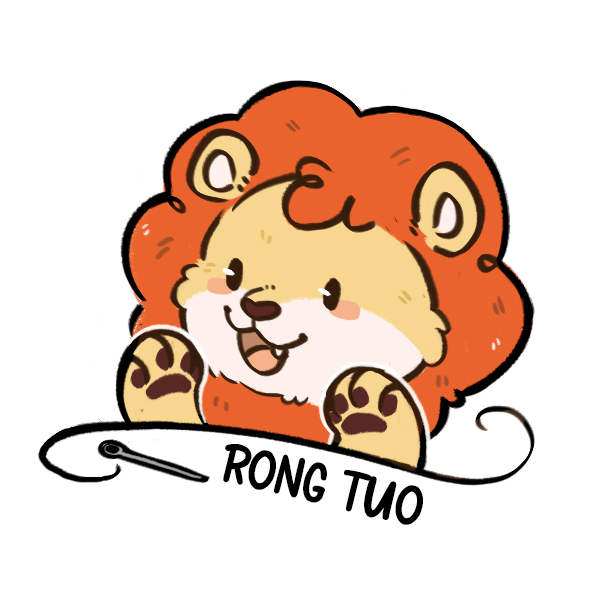Creating custom plush toys involves a detailed process that spans several weeks. From the initial design to the final delivery, the entire journey typically takes 18 to 20 weeks. Each stage plays a crucial role in bringing your vision to life. Understanding the lead times for these stages ensures you can plan effectively and avoid unnecessary delays. By knowing what to expect, you gain better control over the timeline and can make informed decisions throughout the process.
Lead Times for Each Stage of Custom Plush Manufacturing
Design Phase
Timeframe: 1 to 3 weeks
The design phase marks the beginning of your custom plush manufacturing journey. During this stage, you collaborate with the manufacturer to transform your ideas into a detailed design. You provide sketches, reference images, or descriptions to guide the process. The manufacturer refines these inputs into a professional blueprint that captures every detail of your plush toy. This phase typically takes 1 to 3 weeks, depending on the complexity of your design and how quickly feedback is exchanged. Clear communication ensures this stage progresses smoothly and avoids unnecessary revisions.
Prototyping Phase
Timeframe: 7 to 14 days
Once the design is finalized, the prototyping phase begins. In this stage, the manufacturer creates a physical sample of your plush toy based on the approved design. This prototype allows you to evaluate the look, feel, and quality of the product before mass production. You may request adjustments to ensure the final product meets your expectations. This phase usually takes 7 to 14 days. Promptly reviewing the prototype and providing clear feedback can help keep the timeline on track.
Production Phase
Timeframe: 45 to 60 days
The production phase is where your custom plush toys come to life in large quantities. Manufacturers use the approved prototype as a guide to produce the final Products. This stage involves cutting, sewing, stuffing, and assembling the plush toys. The timeframe for production ranges from 45 to 60 days, depending on the order size and the manufacturer’s capacity. Larger orders or intricate designs may require more time. Staying in touch with the manufacturer during this phase helps you stay informed about progress and address any potential issues early.
Shipping Phase
Timeframe: 2 to 40 days (depending on shipping method)
The shipping phase is the final step in custom plush manufacturing. This stage ensures your plush toys reach their destination safely and on time. The timeframe for shipping varies widely, ranging from 2 to 40 days, depending on the method you choose and the destination.
Air freight offers the fastest delivery option, typically taking 2 to 10 days. This method works well if you need your products quickly or have a tight deadline. However, it tends to be more expensive compared to other options. Ocean freight, on the other hand, is more cost-effective but requires more time. It usually takes 30 to 40 days for delivery. This option suits larger orders where cost savings are a priority over speed.
For domestic orders, shipping times are significantly shorter. Delivery within the same country often takes 5 to 7 days, making it a convenient choice for local businesses. If you opt for express shipping services, you can further reduce the delivery time.
To ensure smooth shipping, you should confirm the shipping method with your manufacturer early in the process. Provide accurate shipping details, including the destination address and any special requirements. Tracking your shipment allows you to monitor its progress and address any issues promptly. By planning ahead and selecting the right shipping method, you can avoid unnecessary delays and ensure your plush toys arrive as expected.
Factors That Influence Lead Times
Several factors can impact the time it takes to complete your custom plush manufacturing project. Understanding these elements helps you anticipate potential delays and plan accordingly.
Complexity of Design
The complexity of your plush toy design plays a significant role in determining how long the process will take. Simple designs with fewer details are quicker to create. Intricate designs with unique shapes, multiple colors, or special features require more time. For example, adding embroidery, custom patterns, or accessories increases the production time. Providing clear and detailed instructions to your manufacturer can help streamline this process. If your design is complex, expect longer lead times as the manufacturer ensures every detail is accurate.
Order Quantity
The size of your order directly affects the production timeline. Smaller orders are faster to complete because they require fewer resources and less time on the production line. Larger orders, however, take longer due to the increased volume of materials, labor, and quality checks involved. If you need a large quantity of plush toys, consider placing your order well in advance. This gives the manufacturer enough time to meet your requirements without compromising quality. Discussing your order size with the manufacturer early on helps set realistic expectations for delivery.
Shipping Method
The shipping method you choose significantly influences the final stage of the process. Air freight offers the fastest delivery option, making it ideal for tight deadlines. However, it comes at a higher cost. Ocean freight is more economical but requires more time, often extending the overall lead time by several weeks. Domestic shipping provides a middle ground, offering faster delivery than ocean freight at a lower cost than air freight. Selecting the right shipping method depends on your budget, timeline, and destination. Planning ahead and confirming the shipping details with your manufacturer ensures your plush toys arrive on time.
Manufacturer’s Capacity
The capacity of your manufacturer significantly impacts the lead times for your custom plush project. Manufacturers with high production capabilities can handle larger orders more efficiently, reducing the time required to complete your project. Smaller manufacturers, however, may need additional time to process the same volume of work due to limited resources or equipment.
You should always inquire about your manufacturer’s current workload before placing an order. If they are managing multiple large projects simultaneously, your order might experience delays. Choosing a manufacturer with sufficient capacity ensures that your project receives the attention it deserves. Additionally, manufacturers with streamlined processes and advanced machinery can often deliver faster results without compromising quality.
To avoid unexpected delays, ask your manufacturer about their production schedule and availability. Understanding their capacity helps you set realistic expectations and plan your timeline accordingly.
Seasonal Demand
Seasonal demand plays a crucial role in determining how quickly your custom plush toys can be produced. During peak seasons, such as holidays or major shopping events, manufacturers often experience a surge in orders. This increased demand can extend lead times as production lines become busier.
If your project coincides with a busy season, you should plan ahead and place your order well in advance. Early planning gives your manufacturer enough time to accommodate your request without rushing the process. For example, if you need plush toys for a holiday promotion, start the design and production process months before the deadline.
Off-peak seasons, on the other hand, offer shorter lead times since manufacturers have fewer orders to fulfill. Taking advantage of these periods can help you receive your products faster. Discussing seasonal trends with your manufacturer allows you to identify the best time to place your order and avoid unnecessary delays.
Tips for Managing Lead Times and Avoiding Delays
Start Early
Starting early gives you a significant advantage when managing lead times. The custom plush manufacturing process involves multiple stages, each requiring careful attention and time. By initiating your project as soon as possible, you allow ample time for design, prototyping, production, and shipping. Early planning also helps you address unexpected challenges without jeopardizing your timeline.
For example, if your plush toy design requires revisions or adjustments, starting early ensures you have enough time to make changes without rushing. Manufacturers often experience higher demand during peak seasons, which can extend production timelines. Placing your order well in advance helps you secure a spot in the production schedule and avoid delays caused by seasonal demand. Early action sets the foundation for a smooth and timely process.
Communicate Clearly with Your Manufacturer
Clear communication with your manufacturer is essential for avoiding delays. You should provide detailed instructions and share all necessary information about your project upfront. This includes design specifications, order quantities, and any special requirements. When your manufacturer has a complete understanding of your expectations, they can work more efficiently to meet your needs.
Regular updates throughout the process also help maintain alignment. Check in with your manufacturer during each stage to monitor progress and address potential issues early. If you need to make changes, communicate them promptly to avoid disruptions. Misunderstandings or incomplete information can lead to errors, which may delay your project. By maintaining open and clear communication, you ensure that everyone stays on the same page and works toward the same goal.
Choose a Reliable Manufacturer
Selecting a reliable manufacturer plays a critical role in managing lead times. A dependable manufacturer has the experience, resources, and capacity to handle your project efficiently. They can provide accurate timelines and deliver high-quality products within the agreed timeframe. Researching potential manufacturers before making a decision helps you identify the best partner for your project.
Look for manufacturers with positive reviews, proven expertise, and a track record of meeting deadlines. Ask about their production capacity and current workload to ensure they can accommodate your order. Reliable manufacturers often have streamlined processes and advanced equipment, which reduce production time without compromising quality. Choosing the right partner minimizes the risk of delays and ensures a smoother experience from start to finish.
Plan for Seasonal Variations and Contingencies
Seasonal demand can significantly impact the timeline of your custom plush manufacturing project. Planning for these variations ensures you stay ahead of potential delays and meet your deadlines without stress. By understanding how seasonal trends affect production, you can make informed decisions and maintain control over your schedule.
Start by identifying peak seasons that may influence your project. Holidays, major shopping events, or back-to-school periods often lead to increased demand for custom plush toys. Manufacturers receive more orders during these times, which can extend lead times. If your project aligns with a busy season, place your order as early as possible. Early action gives your manufacturer enough time to accommodate your request without rushing the process.
Off-peak seasons provide an opportunity to complete your project faster. Manufacturers typically have fewer orders during these periods, allowing them to focus more on your production. Take advantage of these quieter times to reduce lead times and ensure smoother communication with your manufacturer.
Prepare for unexpected challenges by building contingencies into your timeline. Delays can occur due to unforeseen circumstances, such as supply chain disruptions or shipping issues. Adding extra time to your schedule helps you handle these situations without compromising your deadline. For example, if you need your plush toys for a specific event, aim to complete production and shipping well in advance.
Communicate with your manufacturer about seasonal trends and their current workload. Ask about their capacity during peak periods and whether they anticipate any delays. This information helps you set realistic expectations and adjust your plans accordingly. Staying proactive and flexible ensures you can navigate seasonal variations and contingencies with confidence.
Custom plush manufacturing demands thoughtful planning and attention to detail. The process typically spans 18 to 20 weeks, covering design, prototyping, production, and shipping. Factors such as the complexity of your design, the size of your order, and the shipping method you choose can influence these lead times. To ensure a smooth experience, start your project early, communicate clearly with your manufacturer, and select a reliable partner. By taking these steps, you can stay on schedule and bring your vision to life without unnecessary delays.


